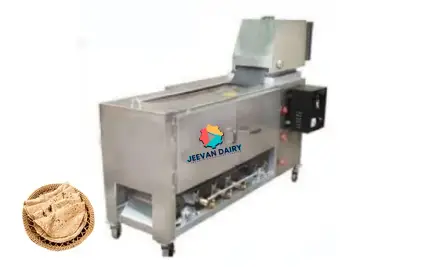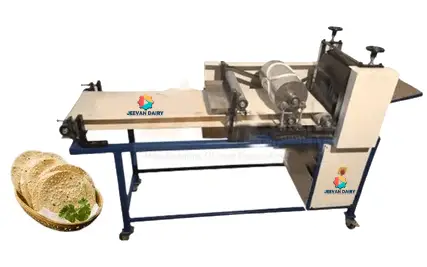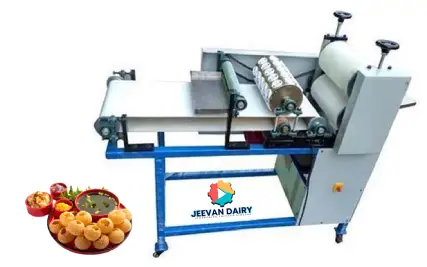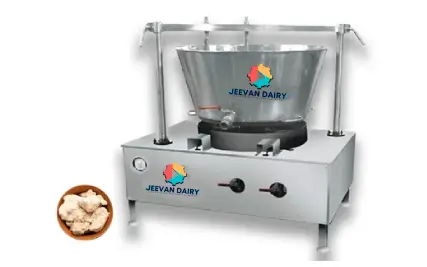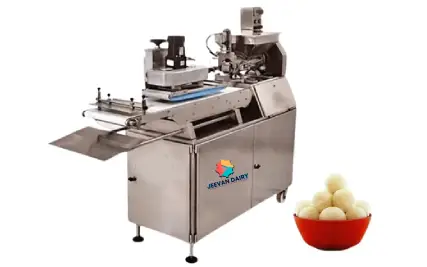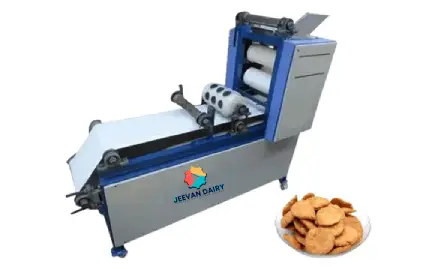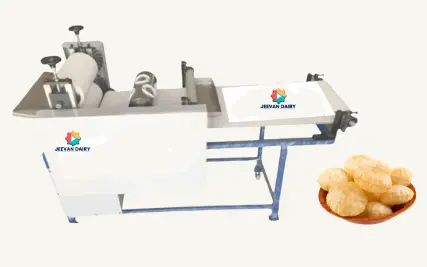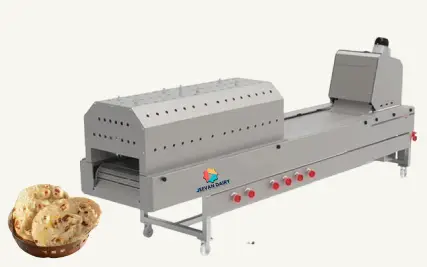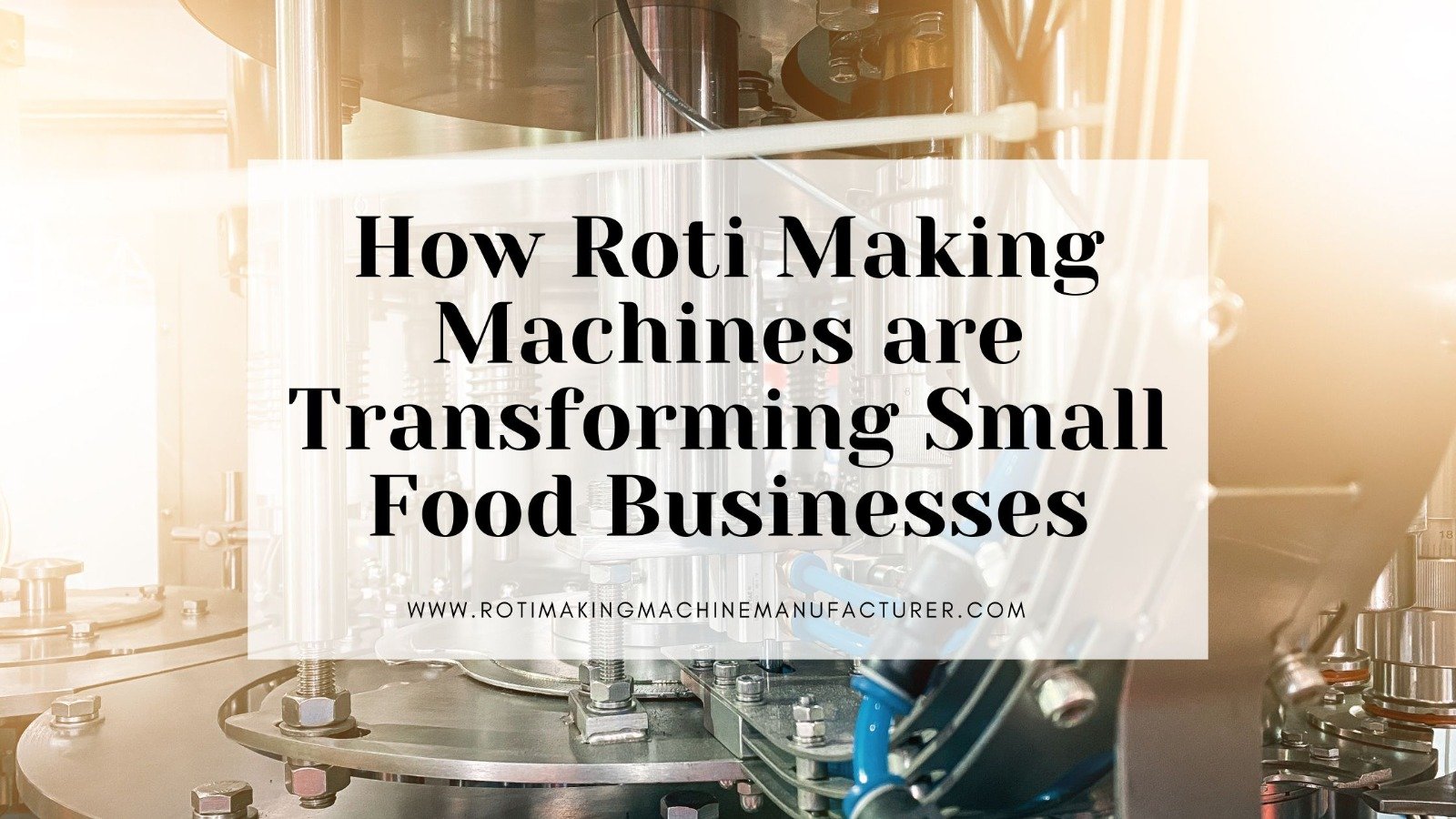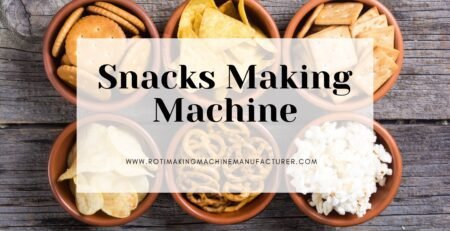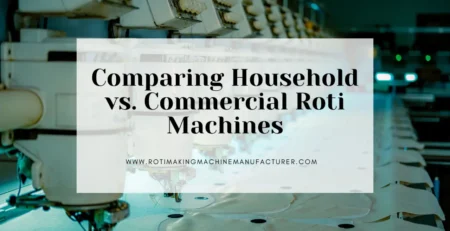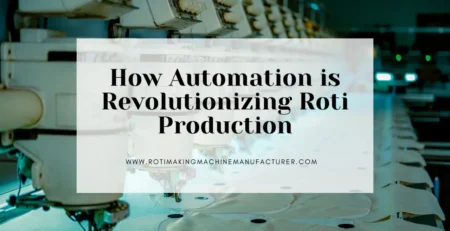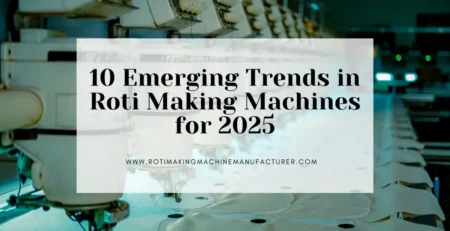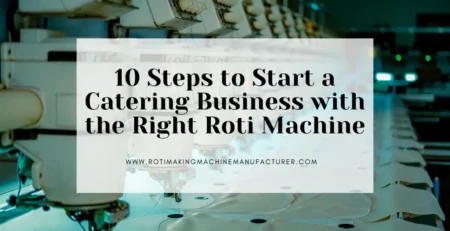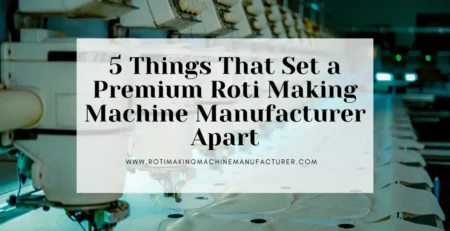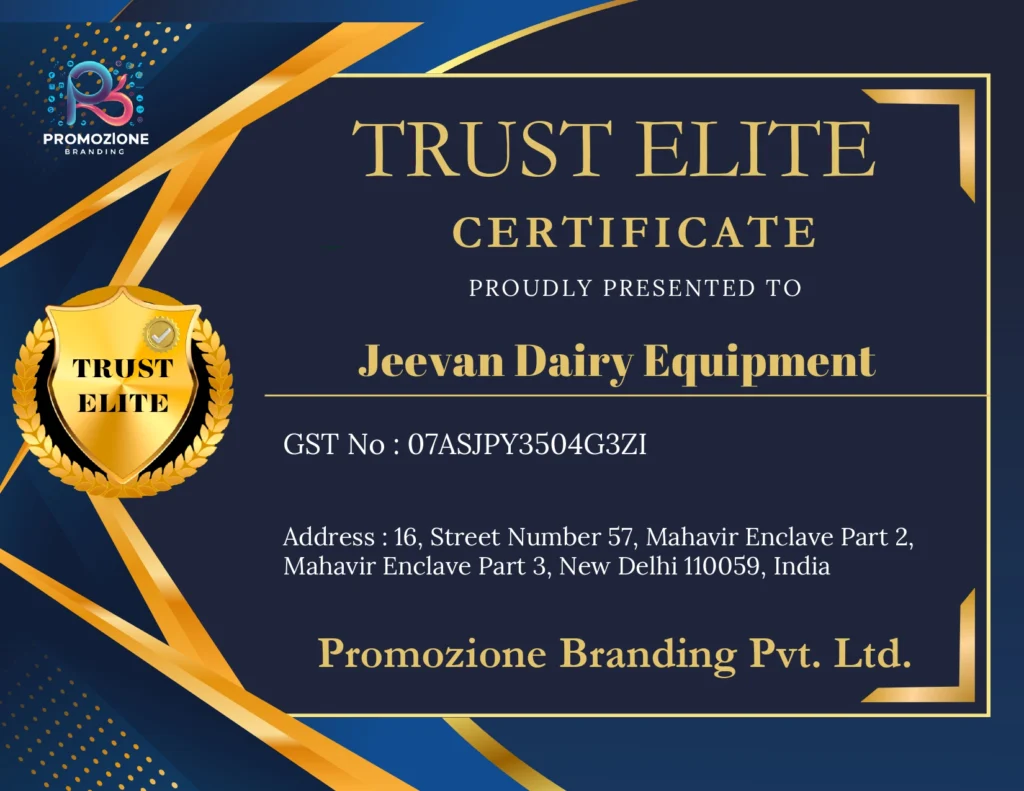How Roti Making Machines are Transforming Small Food Businesses
Introduction
Consider a crowded morning at a neighborhood tiffin service or a small dhaba. Customers wait in line, cooks work quickly, rolling, pressing, and roasting rotis one after another as the aroma of freshly made rotis fills the air. Rotis were made by hand, skill, and endurance for decades. The roti-making machine manufacturer, however, is a simple yet effective device that is currently transforming the way small food businesses function.
Machines used to make roti are more than just motors and metal. They are a lifeline for many small business owners, providing a means of boosting output, maintaining consistency in quality, saving time, lowering expenses, and lessening the strain of manual labor. This article will examine how roti-making machines, produced by reputable manufacturers such as Jeevan Dairy Industry, are revolutionizing small food businesses in India and abroad.
Why small food businesses need roti-making machines
Three pressures are always present in small food businesses: consistency, cost, and time. It is challenging for a single kitchen to meet the demands of serving dozens or even hundreds of customers every day with only manual methods.
Each of these pressures is directly addressed by a roti-making machine. Production is accelerated in the first place because machines can produce a lot more rotis in a minute than a single person can. Second, because fewer skilled workers are required, labor costs are decreased. Third, it guarantees uniform thickness, size, and cooking, all of which are critical for client satisfaction and for companies growing into catering, canteens, or tiffin services.
Beyond these fundamentals, roti-making machines enable companies to offer a wider range of products and services. Once catering only to a small breakfast crowd, a restaurant can now offer packaged rotis for sale, bulk tiffin services regularly, or large orders for events. That ability can help entrepreneurs transform a tiny kitchen into a successful microbusiness.
Types of roti-making machines and what small businesses need
There are various types of roti-making machines. While some are fully automatic and prepared for constant, high-volume use, others are small and only partially automated. A small business can select the best model by being aware of the primary types.
The dough-ball former and press combination is one common type. The dough is portioned, rolled into balls, and then pressed into round discs by these machines. Because they save the most time during the shaping stage, they are ideal for cloud kitchens and small restaurants. Then there are fully integrated lines, which are machines that shape, roast, mix dough, proof it if necessary, and occasionally even stack or package rotis. For companies that require large volumes with little human involvement, these are perfect.
Separating machines designed for wheat rotis from those for specialty flatbreads like chapati, paratha, or roomali roti is another crucial difference. To accommodate various recipes, certain machines have movable thickness and diameter settings, which are crucial for small businesses seeking to offer a diverse menu.
Space, power needs, ease of maintenance, output capacity, and the ability to adjust roti thickness and size are all factors small business owners should take into account when selecting a machine. A reputable manufacturer of roti-making machines, like Jeevan Dairy Industry, can offer solutions that are specific to these requirements in addition to spare parts and post-purchase assistance.
Real benefits: speed, savings, and safety
The main advantage is speed. Depending on the model and setup, a good roti-making machine can increase production from 80 to 100 rotis per hour by hand to 800 to 1,200 rotis per hour. It’s the capacity to serve more clients and take on bigger orders, not just more rotis.
Next are savings. Because fewer skilled workers are required for the repetitive, physically taxing aspects of the job, labor costs decrease. Additionally, there is less waste because machines precisely portion dough, resulting in fewer rotis that are uneven or wasted. When heating and cooking systems are optimized and efficient, energy costs can also be reduced.
Ergonomics and safety are important but frequently disregarded. Making rotis by hand requires prolonged periods of repetitive motion, which can lead to strain and injury. This human burden is lessened by machines, which also make the workplace safer. Additionally, machine processes make it easier to maintain consistent hygiene, particularly when using food-grade components and stainless steel.
Quality and consistency — why customers notice
Consumers observe consistency even if they are unable to identify the roti-making technique. Trust is built by a roti that is consistently the same size, soft, and evenly browned. Repeat business happens when customers are aware of what to expect.
Even during busy times, machines aid in preserving that consistency. When delivering hundreds of packaged meals or to corporate canteens with stringent food standards, a properly calibrated roti-making machine yields the same outcome every time. That dependability is invaluable for small brands looking to establish a reputation.
How roti-making machines enable new business models
Roti-making machines are more than equipment — they unlock new business models. Consider the following ways small businesses can grow:
- Tiffin and meal subscription services: Daily bulk orders are now possible thanks to mechanized production. Dozens or even hundreds of subscribers can be consistently served in a tiny kitchen.
- Scaling a cloud kitchen: Cloud kitchens require speed and volume to function well. A cloud kitchen can maintain quality throughout several delivery times with the aid of a roti maker.
- Event catering: Bulk rotis are frequently needed for weddings, business lunches, and community gatherings. Better pricing is made possible by machines, which also reduce preparation time.
- Retail-packaged rotis: Some companies sell fully baked or par-baked rotis in retail packaging. Packable consistency is guaranteed by machines, extending shelf life and boosting consumer confidence.
- Franchise-friendly operations: Franchise models demand standardisation. Machines help deliver the same product across locations.
Each of these paths increases revenue potential for small business owners while keeping operational complexity manageable.
Case study (hypothetical but typical): from single chef to steady growth
Meet Rekha, who made hand-rolled rotis at a little roadside restaurant. Her breakfast business did well, but due to capacity constraints, she had to turn away orders for catering and larger groups. A semi-automatic roti-making machine from a nearby manufacturer was installed by her. Within a month she was taking tiffin orders for nearby offices and accepted weekend catering jobs. In just three months, her revenue increased by 40%, labor costs decreased, and customer reviews commended the steady quality. Profits were reinvested by Rekha in a delivery scooter and social media advertisements, allowing for modest but consistent growth made possible by a single machine.
Stories like these are common in towns where small business owners use technology that suits their needs in terms of both cost and scale.
Choosing the right Roti Making Machine Manufacturer
Selecting a manufacturer is just as important as selecting the machine. A trustworthy manufacturer of roti-making machines will provide equipment that meets actual kitchen requirements and support them with maintenance, replacement parts, and instruction. Important things to consider are:
- Reputation and reviews: Seek out producers who have received good reviews from small companies.
- After-sales support: Local support is a huge plus because machines require tuning, spare parts, and sporadic servicing.
- Customization: It adds value for manufacturers to be able to modify machine settings for varying roti thicknesses, sizes, or regional recipes.
- Certifications for safety and energy efficiency lower operating costs and increase operational security.
- Training and user manual: Appropriate training increases machine longevity and decreases downtime.
Businesses that produce food processing equipment, such as Jeevan Dairy Industry, frequently offer small business owners combinations of user training, spare parts, and customization. When a manufacturer is aware of the limitations of small kitchens, the machine transforms from a mere gadget into a useful business tool.
Installation, training, and integration into the kitchen
The way a machine is used determines its quality. For operations to run smoothly, proper installation and training are essential. Site inspection (to verify space, ventilation, and power), installation by a qualified technician, and practical training for the kitchen crew are all common components of an onboarding process.
Opportunities to reorganize the kitchen for increased efficiency are frequently revealed by incorporating a roti-making machine into an existing workflow. For instance, putting the machine close to stations for making dough and packaging it speeds up the cycle and minimizes movement.
Simple and unambiguous maintenance plans should include weekly belt or roller inspections, daily cleaning, and sporadic lubrication. For the machine to remain dependable, a reputable manufacturer will offer schedule reminders and maintenance instructions.
Costs, ROI, and financing — making the numbers work
The initial cost is a concern for many small business owners. Even though machines need an initial investment, when used properly, the return on investment (ROI) can be surprisingly quick.
Take into account the following benefits and savings: lower labor costs, less waste, more output per day, more pricing power for large orders, and the capacity to accept more orders. Depending on usage and cost, a roti-making machine can pay for itself in 6–18 months for many businesses.
The purchase is made possible by financing options like manufacturer EMI plans, equipment leases, and small business loans. Include indirect benefits in your ROI analysis, such as better employee health, reliable product quality, and service expansion potential, as these frequently result in sustained revenue growth.
Maintenance, longevity, and spare parts
Durability is important. Over time, machines with high-quality motors, readily available spare parts, and food-grade stainless steel will last longer and cost less. Bacterial growth and dough accumulation are avoided with routine cleaning. Simple everyday chores like cleaning the heating element, emptying the crumbs, and wiping the rollers make a big difference.
A trustworthy manufacturer of roti-making machines will have replacement parts readily available and provide clear, easy-to-follow troubleshooting instructions. Having a responsive manufacturer helpline or a local technician helps small business owners avoid lengthy outages that could negatively impact their operations.
Common myths and concerns — debunked
Concerns regarding food preparation mechanization are common:
Myth 1: Rotis taste worse after being processed by a machine.
Reality: When properly configured and maintained, machines can make rotis that are just as soft and delicious as those made by hand. Timing and dough formulation remain crucial; while machines handle the work, the recipe remains important.
Myth 2: Customers will notice when machines take away the artisan touch.
Reality: Customers are frequently won over by consistency. Instead of offering handcrafted variation, many food outlets succeed by providing consistent quality. Combining hand-finished items with machine-made base rotis can provide the best of both for specialty or high-end outlets.
Myth 3: Upkeep is too difficult.
The truth is that modern machines are made to be easily cleaned and maintained. Regular checklists and training make maintenance simple.
Environmental and Social Benefits — Making Business Sustainable and Humane
The development of roti-making machines is a tale of social progress and sustainability as much as business expansion. The ramifications of small food businesses moving from manual to mechanized roti production go well beyond financial gains. The benefits, which range from improved working conditions to energy conservation, are forming a more conscientious food industry.
Let’s examine how these devices, particularly those produced by reputable roti-making machine manufacturers like Jeevan Dairy Industry, contribute to social and environmental change.
Reduced Food Waste and Resource Efficiency
Small mistakes in rolling thickness, overcooking, or dough measurement frequently result in waste when making rotis by hand. Over a month, even a 5–10% daily waste adds up to a substantial loss of food. On the other hand, roti-making machines are made to be precise. They guarantee constant cooking temperatures, maintain uniform thickness, and portion dough precisely.
This accuracy significantly lowers gas, oil, and flour waste. Food businesses consequently run more effectively and make responsible use of resources, which is a crucial step in the direction of sustainability. This has two positive effects on the environment: energy is used more efficiently in each batch, and fewer food materials are wasted.
Energy Efficiency and Lower Carbon Footprint
Conventional manual roti-making systems frequently use several gas burners that burn natural gas or LPG continuously. Energy-efficient heating systems and regulated cooking zones that reduce needless heat loss are integrated into contemporary roti-making machines.
For instance, Jeevan Dairy Industry’s machinery is designed to use the least amount of fuel and electricity possible. They reduce the amount of energy used per roti produced by keeping temperatures constant and implementing automatic power-off modes. This significantly lowers operating costs and carbon emissions when hundreds of rotis are produced daily.
In addition to saving money, small businesses that use energy-efficient equipment support India’s growing initiative to cut down on environmental impact.
Improved Workplace Safety and Ergonomics
Making rotis by hand may seem easy, but it requires many hours of repetitive hand labor, including pressing, rolling, and turning a hot tawa over. Back pain, shoulder strains, burns, and exhaustion are common among workers. Such circumstances may eventually have an impact on health, lower productivity, and raise employee turnover.
Small food businesses make workplaces safer by introducing roti-making machines. Workers can concentrate on less physically taxing duties like quality control, packaging, and monitoring while the machines take care of the heat and repetition. Employee retention, happiness, and general morale all increase as a result.
In addition to being morally right, a secure and comfortable work environment enhances the company’s standing with clients and prospective workers.
Empowering Women and Supporting Inclusive Growth
Women make up a sizable portion of the small food sector workforce in India; many of them juggle part-time kitchen jobs with household duties. Making rotis by hand takes a lot of time and is physically taxing. Because roti-making machines streamline the process, women employees and business owners can effectively manage production without putting in a lot of physical labor.
Even non-technical employees can operate Jeevan Dairy Industry’s machines with little training because they are made to be simple to use. Because of this inclusivity, small home-based food businesses, cooperative kitchens, and women-led tiffin services are able to grow their clientele and revenue.
In this instance, technology serves as a tool for social empowerment, facilitating fair participation and improved living standards.
Promoting Hygiene and Public Health
Food preparation hygiene is a public health requirement, not just a customer concern. Frequent hand contact, open spaces, and uneven cleaning techniques raise the risk of contamination when making rotis the old-fashioned way. Conversely, machines reduce the number of human touchpoints.
Food-grade stainless steel and smooth, easily cleaned surfaces are used in the construction of roti-making machines. Detachable parts for daily washing are even included in many Jeevan Dairy Industry models, guaranteeing that every batch of rotis satisfies strict hygienic requirements.
This assurance of hygiene is a significant benefit for small food businesses catering to hospitals, schools, or corporate canteens, as it enhances customer confidence and brand recognition.
Reducing Labour Dependency While Creating Skilled Jobs
Automation appears to decrease employment at first, but in reality, it changes the nature of work that is available. Workers can now be trained to operate, monitor, and maintain machines, resulting in a skilled workforce, rather than spending hours manually rolling dough.
This change boosts productivity and creates new job opportunities for supervisors, maintenance technicians, and machine operators. Here, the role of the manufacturer of roti-making machines, like Jeevan Dairy Industry, becomes vital; they frequently offer technical assistance and training, assisting small food businesses in developing skilled labor.
Over time, this shift helps India achieve its larger objective of equipping its workforce with cutting-edge, technical skills.
Supporting Local Manufacturing and Reducing Imports
The domestic manufacturing ecosystem is strengthened each time a company purchases a machine from an Indian roti-making machine manufacturer like Jeevan Dairy Industry. Better local service access, less foreign exchange outflow, and lower transportation emissions than imported machinery are all benefits of local production.
Supporting Indian manufacturers also contributes to the creation of jobs in the nation, from component fabrication to machine assembly, strengthening the “Make in India” campaign and encouraging long-term industrial growth.
Smaller Environmental Footprint in the Long Term
Multiple manual workstations can be replaced by a single machine, resulting in less equipment overall and lower gas and electricity consumption. This leads to a reduced operational footprint over time.
To further reduce emissions, a lot of contemporary roti makers now have optional, environmentally friendly heating options like infrared or electric induction heaters. Small food businesses can become more carbon neutral by combining renewable energy sources (such as solar-powered kitchens) with their operations.
Encouraging Responsible Consumption and Scalable Growth
Food businesses are able to precisely match production to demand thanks to the efficiency that automation brings. The UN’s Sustainable Development Goals for responsible consumption are in line with this “produce-as-needed” model, which minimizes spoiling and overproduction.
Without requiring significant infrastructure changes, small businesses that use roti-making machines can strategically scale up, producing more only when orders rise. Growth is guaranteed without needless environmental stress thanks to this adaptability.
Building a Modern, Ethical Food Industry
Last but not least, implementing technology like roti-making machines signifies a shift in perspective. It’s about striking a balance between responsibility and profit, making sure that development doesn’t come at the expense of people or the environment.
A significant part of this change is shaped by manufacturers such as Jeevan Dairy Industry. They contribute to the development of a contemporary, moral, and sustainable food ecosystem by creating machines that are hygienic, long-lasting, and energy-efficient.
Essentially, each automated roti that rolls on a hot plate represents an advancement rather than merely being a piece of bread. It illustrates how small food businesses can support local communities while taking care of their employees, saving energy, and preserving the environment for coming generations.
Final thoughts
More than just tools, roti-making machines from a reputable manufacturer like Jeevan Dairy Industry act as catalysts. They boost capacity, improve consistency, free up human energy, and create new revenue streams for small food businesses. The correct machine can turn your everyday routine into a scalable business model, regardless of whether you operate a roadside dhaba, cloud kitchen, tiffin service, or catering business.
Using a roti-making machine is a way to enhance tradition rather than replace it. The essence of a meal is still the warmth of a freshly made roti; a machine merely makes it easier to serve that warmth to more people more frequently while reducing stress and increasing revenue. That is the formula for true growth for a lot of small businesses.

